#Mobile UI Design
Explore tagged Tumblr posts
Text
please i hate useless ui updates
#my brain can't take it#it will after like a day#but stop changing things#it was fine before#mobile ui design#woah aer talks?
8 notes
·
View notes
Text

WHAT IN THE ACTUAL FUCK IS THIS
#tumblr mobile#mobile update#mobile ui design#EWWWWW GET IT AWAY WHAT ARE ALL THESE BUTTONS#i hate change
7 notes
·
View notes
Text
iOS Apps Development: A Complete Guide for Beginners and Professionals
In the digital age, mobile applications have revolutionized the way we communicate, shop, learn, and entertain ourselves. Among the leading platforms, iOS — Apple’s mobile operating system — holds a significant position due to its high security, performance, and loyal user base. Developing iOS apps has become a lucrative and innovative career path for developers worldwide. Whether you are a beginner or a seasoned developer, understanding the essentials of iOS app development is crucial in delivering high-quality applications for iPhone, iPad, and other Apple devices.
What is iOS App Development?
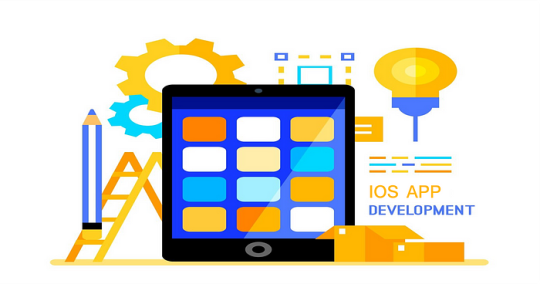
iOS app development refers to the process of creating mobile applications for Apple hardware, including iPhone, iPad, Apple Watch, and Apple TV. These apps are built using languages like Swift and Objective-C, and the development is done within Apple’s Xcode environment. The final product is submitted to the App Store, where users can download and use the app.
Tools and Technologies Required
To get started with iOS development, you’ll need to be familiar with certain tools and technologies:
Xcode: Apple’s official IDE for iOS app development. It includes a code editor, simulator, debugger, and tools for designing user interfaces.
Swift: A modern, powerful, and intuitive programming language introduced by Apple. It is currently the preferred language for iOS development.
Objective-C: An older but still-used programming language for iOS apps, especially for legacy code.
Interface Builder: A part of Xcode used to design app UIs with drag-and-drop elements.
Cocoa Touch: A UI framework used to develop applications that run on iOS.
Simulator: An emulator that allows developers to test their apps on virtual Apple devices.
Key Stages of iOS App Development
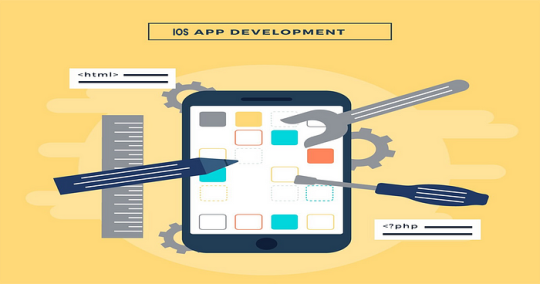
Here’s a step-by-step breakdown of the iOS app development process:
Ideation and Planning Define the app’s purpose, target audience, features, and functionality. Conduct market research and competitor analysis.
UI/UX Design Design user-friendly interfaces with intuitive navigation. Use tools like Sketch or Figma, and follow Apple’s Human Interface Guidelines.
Development Start coding using Swift or Objective-C in Xcode. Follow modular architecture and use design patterns like MVC or MVVM for clean and scalable code.
Testing Thoroughly test the app for bugs, crashes, and performance issues using XCTest, UI tests, and the Xcode simulator.
Deployment Prepare your app for the App Store by creating an Apple Developer account, setting up certificates, and submitting the app through App Store Connect.
Maintenance and Updates After the app is live, gather user feedback, fix issues, and release updates to enhance the app’s performance and features.
Benefits of Developing for iOS
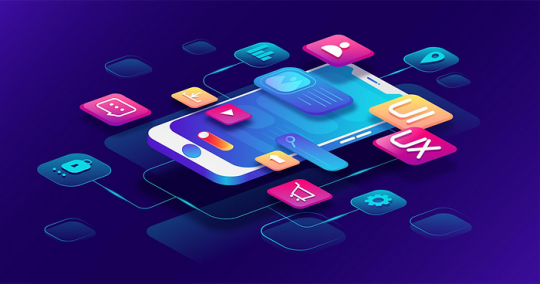
High-Quality Users: iOS users are known for their willingness to spend money on apps and in-app purchases.
Strong Security: Apple provides a secure environment with robust encryption and sandboxing techniques.
Consistent User Experience: The uniformity of iOS devices helps developers create apps with a consistent look and feel.
Global Reach: With the App Store available in over 175 countries, developers can access a worldwide user base.
Future of iOS App Development

With the continuous evolution of iOS and the introduction of technologies like SwiftUI, ARKit, CoreML, and Wearables Integration, iOS development is set to become more dynamic and impactful. Developers will be able to build smarter, more interactive, and more efficient apps that cater to the next generation of users.
Learn More About iOS APP Development
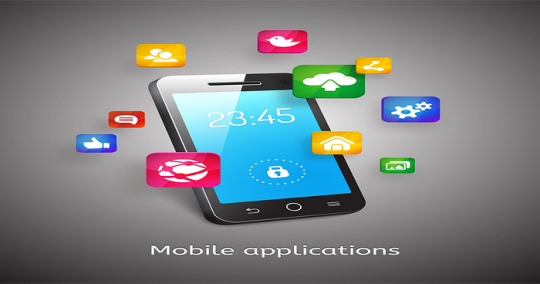
iOS app development is an exciting and rewarding field for developers who want to build robust, user-centric mobile applications. Whether you’re developing your first app or refining your skills, understanding the tools, process, and future trends in iOS development is key to success. With Apple’s thriving ecosystem and global audience, the opportunities are endless for those ready to dive into the world of iOS apps.
#ios app development#web app development#johnny soap mactavish#mobile app deployment#mobile ui design
0 notes
Text
Motion That Moves You | By Lollypop Design Studio 🎨
Design isn't just what you see. It's what you feel. At Lollypop Design Studio, we breathe life into digital interfaces through motion, emotion, and purpose-driven design.
This snippet showcases our latest work — a mobile-first experience enhanced by subtle, delightful micro-interactions that guide the user and amplify brand identity. Every swipe, bounce, and fade is crafted to keep users engaged and moving forward.
💡 What We Focused On ✔️ Human-centered design ✔️ Smooth, strategic transitions ✔️ Visual hierarchy through motion ✔️ Brand-consistent experience
🧠 Design that converts. Motion that matters. We don't just design screens — we create moments.
🔗 Want to elevate your digital product? Visit us → www.lollypop.design 📩 Let’s chat → [email protected]
For more, visit our site: https://lollypop.design/
Check out our Projects: https://lollypop.design/projects/
Get a free consultation: https://lollypop.design/project-enquiry/
#ui ux company#ui ux design#uidesign#ui ux development services#web development#web design#motion design#microinteractions#mobile ui design#LollypopDesignStudio#creative design#designinspiration#product design#digitalexperience#tumblr design
1 note
·
View note
Text






Experience a beautifully crafted coffee shop app designed with users in mind! 🎨✨
Our clean and modern UI ensures effortless navigation, while the intuitive UX streamlines ordering, customization, and checkout in just a few taps.
From a visually appealing menu to a smooth ordering flow, every detail is designed for a seamless and delightful coffee experience.
1 note
·
View note
Text



1 note
·
View note
Text

1 note
·
View note
Text
The Art of Crafting an Exceptional Mobile UI Design
In the present high speed computerized world, Mobile UI design assumes a basic part in the outcome of any application. As versatile use keeps on taking off, the interest for smooth, natural, and effective Mobile App UI design has never been higher. Be that as it may, what precisely makes a decent Mobile connection point, and how might planners guarantee their applications stand apart from the opposition? We should dive into the standards of planning the ideal Mobile App UI that upgrades client experience and usefulness.
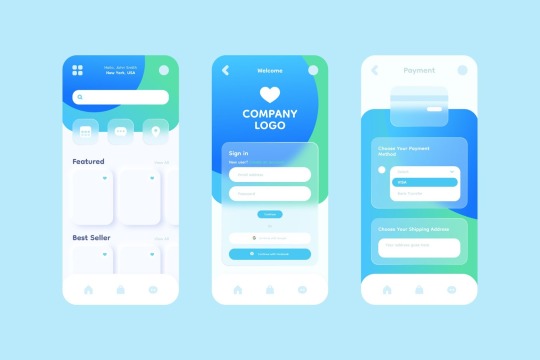
What is Mobile UI Design?
Mobile UI design alludes to the method involved with making points of interaction for versatile applications that are outwardly engaging as well as simple to utilize. It's tied in with guaranteeing that each component — from buttons to textual styles to variety plans — adds to a consistent client experience. A very much created Versatile application UI assists clients with exploring the application effortlessly, making their cooperation proficient and pleasant.
Key Standards of Mobile App UI Design
Effortlessness is Key: The best Mobile UI designs focus on straightforwardness. A stuffed connection point can overpower clients, prompting disarray and disappointment. With regards to Mobile App UI design, toning it down would be best. Worked on route, natural symbols, and clear typography assist clients with zeroing in on what makes the biggest difference.
Consistency in Plan: Consistency in a Versatile application UI guarantees that clients have a firm encounter across various screens. This remembers keeping up with consistency for variety ranges, button styles, and text styles. A steady plan decreases the expectation to learn and adapt and cultivates client certainty.
Responsive and Versatile Formats: One of the fundamental parts of Mobile App UI design is guaranteeing that the application adjusts to different screen sizes and directions. An adaptable Mobile UI design will look extraordinary whether clients are holding their telephones upward or on a level plane, or in any event, when they switch between gadgets like tablets and cell phones.
Quick Stacking Time: In the present speedy world, clients have little persistence for slow applications. A very much upgraded Mobile App UI guarantees that the application stacks rapidly and moves along as expected. This includes planning lightweight UI components and streamlining pictures and code for execution.
Client Focused Plan: Effective Mobile UI design generally keeps the client at the very front. This implies directing client research, figuring out the main interest group, and integrating criticism into the plan. An extraordinary Versatile application UI isn't simply outwardly satisfying; it is planned in view of the client's requirements, guaranteeing that each component is utilitarian and simple to get to.
Interactive and Engaging: Current Mobile App UI design ought to consolidate intuitive components that keep clients locked in. This incorporates activitys, miniature collaborations, and signals that cause the application to feel dynamic and responsive. Be that as it may, it's significant not to go overboard — these components ought to improve the experience, not degrade ease of use.
Patterns in Mobile App UI Design
Remaining refreshed with the most recent plan patterns is essential for making a cutting edge Mobile UI plan. Here are a few latest things:
Dim Mode: More applications are incorporating dim topics into their Mobile App UI. Besides the fact that it looks smooth, yet it likewise lessens eye strain, especially in low-light conditions.
Moderation: As referenced prior, straightforwardness is vital. Numerous originators are choosing moderate Versatile UI configuration, zeroing in on clean lines, more than adequate void area, and a restricted variety range.
Voice UI (VUI): The ascent of voice aides like Siri and Google Colleague has prompted the coordination of voice orders inside the Versatile application UI. Planning for VUI includes a special way to deal with Mobile App UI plan that records for both visual and hear-able client collaboration.
Conclusion
In a serious market, a thoroughly examined Mobile UI design can be the distinction among progress and disappointment. By focusing on client experience, guaranteeing consistency, and keeping steady over plan patterns, you can make a Versatile application UI that looks perfect as well as capabilities immaculately. Whether you're fostering a new application or upgrading a current one, zeroing in on the standards of Mobile App UI design will assist you with conveying an item that clients love.
Keep in mind, the way to fruitful Mobile UI design is making a natural, drawing in, and utilitarian connection point that lifts the by and large application experience.
#Mobile Interface Design#Mobile UI design#Mobile App UI design#Mobile Application Design#Mobile app UI#Mobile UX design#Mobile user interface design#Mobile App UX design#mobile application development company#mobile application development
0 notes
Text
AI-Driven EHR: Transforming Healthcare with Intelligent Data Solutions

Healthcare extends beyond just doctors and patients; even the smallest decisions can impact life or death. Electronic Health Records (EHRs) have revolutionized medical data storage and access, surpassing traditional paper-based systems. However, their evolution continues, accelerating with AI integration.
The global digital health market was valued at USD 240.9 billion in 2023 and is expected to grow at a compound annual growth rate (CAGR) of 21.9% from 2024 to 2030. (Source: Grand View Research)

Whether you’re a healthcare professional, a tech enthusiast, or simply curious about how AI is reshaping the healthcare landscape, this post is for you. The goal is to showcase how AI-driven EHRs are revolutionizing the industry and how our expert app development is leading this digital transformation from the ground up.
In this blog, we’ll explore how AI-driven EHRs transform healthcare by enabling smarter patient management, personalized care, and predictive insights that improve patient outcomes. AI is driving a new era in healthcare, shaping how medical professionals approach decision-making and treatment strategies.
Key Takeaways
AI-driven EHRs are revolutionizing healthcare by enhancing patient management, providing personalized care, and enabling predictive insights that improve outcomes.
Integrating AI into EHR systems unlocks new possibilities in the healthcare sector. It will bring out the best potential from the health professionals and give the best treatments to the patients as well.
However, there are some challenges that also come with data solutions. Suppose, you carry an AI-driven EHR system into your healthcare app development. It will create a better digital environment because it is based on the cloud computing format.
What are Electronic Health Records (EHRs)?

Electronic Health Records (EHRs) are digital versions of a patient’s medical history, health details, and treatment records. These records allow quick access for doctors, treating physicians, and patients. The shift to a digital format, like AI-driven EHR, brings numerous advantages to AI in healthcare, replacing outdated paper-based systems.
AI-driven EHR systems contain extensive information, including patient medical history, allergies, medications, lab test results, imaging reports, vaccination records, and demographic data. This consolidated information enables healthcare providers to gain a comprehensive understanding of a patient’s health. In turn, it allows more precise and informed decisions regarding treatment and care.
A crucial aspect of AI-driven EHR systems is the ability to securely share and access data across different healthcare providers and settings. This sharing fosters improved coordination and communication between teams. As a result, it leads to better care and treatment outcomes for patients.
Additionally, AI-driven EHR systems can automate many administrative tasks. They can analyze patterns in patient data and alert healthcare professionals to potential risks. This further optimizes patient management and enhances the overall efficiency of the healthcare system.
Role of AI in EHR (Electronic Health Records)

AI is set to revolutionize Electronic Health Records (EHRs), unlocking new opportunities for improving patient care, decision-making, and healthcare processes. An AI-driven EHR system combines vast datasets with advanced algorithms, transforming various aspects of healthcare management.
Data Management and Organization
AI algorithms can categorize and streamline patient data, making it easier for healthcare professionals to access and comprehend critical information.
Data Analysis and Insights

AI-driven EHR systems can evaluate data from multiple sources like medical records, lab results, and genetic data. By identifying patterns, AI helps detect diseases earlier, enhances diagnoses, and enables personalized treatments.
Predictive Analytics
AI can predict patient outcomes by analyzing historical data and risk factors. It highlights individuals vulnerable to specific conditions, allowing proactive interventions and minimizing adverse health events.
Natural Language Processing (NLP)

AI’s Natural Learning Processing (NLP) capabilities allow it to interpret human language, extracting essential data from clinical notes and reports. This consolidated information builds a comprehensive patient profile for better analysis.
Virtual Medical Assistants
AI-powered virtual assistants can automate routine tasks like scheduling appointments, updating records, and addressing basic patient inquiries. This automation gives healthcare providers more time to focus on patient care.
Image and Signal Analysis
AI-driven EHRs excel in analyzing medical images, such as X-rays and MRIs, and signals like ECGs. AI algorithms learn from large datasets, improving accuracy and speed in detecting anomalies for diagnosis.
Clinical Decision Support

AI-driven EHR systems serve as decision-support tools, providing evidence-based insights to physicians. They recommend diagnoses, and treatment options, and even alert doctors to potential drug interactions or allergies.
Personalized Medicine
AI can create tailored treatment plans based on an individual’s genetics, medical history, and lifestyle. This personalization enhances treatment effectiveness and minimizes adverse reactions.
Although AI-driven EHR systems hold immense promise, challenges like data privacy, algorithm validation, and transparency remain. However, as AI technology matures, these systems will redefine healthcare, making operations smoother and more efficient.
Challenges to Adopt AI-Driven EHR

The integration of AI in Electronic Health Records (EHRs) brings numerous advantages, but there are several challenges and barriers that hinder widespread adoption. These include concerns like interoperability between different EHR systems, data privacy, compliance with healthcare regulations such as HIPAA, and resistance from healthcare professionals.
Overcoming these barriers requires robust data governance, standardized interoperability frameworks, and comprehensive training for healthcare providers on AI-driven EHR systems. Let’s explore the key challenges in more depth.
Data Bias
AI-driven EHR systems can face data bias, which occurs when algorithms are trained on historical or incomplete datasets, this can lead to skewed predictions and unequal treatment, especially in underrepresented populations. Addressing this bias is critical to ensuring fairness in healthcare outcomes.
Addressing this bias is critical to ensuring fairness in healthcare outcomes. Healthcare organizations must prioritize the development of inclusive datasets and implement safeguards to detect and mitigate bias. Doing so can lead to more equitable AO-based decision-making and ensure that patient care is not compromised by algorithmic errors.
Reliability

AI-driven EHR systems must be reliable to ensure accurate patient care. Challenges arise from the use of poor-quality or irrelevant data sources, which can lead to eros in AI predictions and recommendations. To address this,��healthcare app development should implement robust validation processes to assess the accuracy and relevance of data used by AI algorithms. Regular updates to AI systems and continuous monitoring of their performance are essential for maintaining reliability and trust in AI-powered healthcare app development.
Responsibility
Over-reliance on AI-driven EHR systems can pose risks. While AI enhances healthcare decision-making, it should not replace human judgment.
Healthcare providers must maintain oversight to ensure ethical, patient-centered decisions. AI should function as a tool that complements human expertise, and clinicians should remain actively involved in interpreting AI outputs. Ensuring that AI systems are used as supplementary tools reinforces the importance of human intuition and ethical considerations in delivering quality care.
Data Privacy and Security
AI-driven EHR systems handle vast amounts of sensitive patient information, making data privacy and security paramount. Unauthorized access or breaches can have serious consequences for both patients and healthcare app development.
Healthcare providers must adopt strong encryption measures, secure access controls, and strict compliance with regulations like HIPAA. These precautions help safeguard patient data from malicious threats, ensuring that AI systems operate securely while maintaining trust in digital healthcare solutions.
Transparency and Explainability

For AI-driven EHR systems to be trusted by healthcare professionals, they must be transparent and explainable. Providers need to understand how Generative AI algorithms render recommendations and make predictions.
Transparent AI systems allow clinicians to assess the logic behind suggestions, enabling informed decision-making. Healthcare organizations should prioritize the development of AI models that are easy to interpret, ensuring that healthcare professionals feel confident using them to support patient care.
Algorithmic Accountability
Accountability is vital in AI-driven EHR systems. Healthcare organizations are responsible for monitoring and evaluating AI algorithms to ensure fairness and equity. Regular audits can help identify and correct biases or errors in AI outputs. Establishing accountability frameworks ensures that AI-driven decisions are consistent with ethical standards and patient safety goals.
Continuous refinement of algorithms, guided by healthcare experts, ensures that AI systems remain reliable and trustworthy in practice.
Clinical Validation and Evidence-Based Practice
Before implementing AI-driven EHR systems, it is crucial to validate these technologies through rigorous clinical trials and peer-reviewed studies. This ensures that AI systems are safe, reliable, and effective in real-world healthcare settings.
Evidence-based practice strengthens the integration of AI in clinical workflows, giving healthcare providers confidence in using these technologies. Ongoing validation processes help refine AI models and maintain alignment with evolving healthcare needs.
Human-AI Collaboration
AI-driven EHR systems are designed to enhance, not replace, human capabilities in healthcare. Successful AI adoption depends on fostering a collaborative environment where AI tools complement the expertise of healthcare professionals. Human oversight ensures that AI-generated insights are applied ethically and safely.
Healthcare providers should retain decision-making authority, using AI recommendations to inform their judgments. Collaboration between humans and AI leads to more comprehensive care and better outcomes for patients.
Education and Training

For AI-driven EHR systems to be effective, healthcare professionals need ongoing education and training. Continuous learning is essential for adapting to advancements in AI technology. Professional development programs should equip providers with the knowledge to integrate AI tools into their practice.
Familiarity with AI systems ensures that healthcare professionals can fully leverage AI-driven insights, improving patient care and keeping pace with the future of healthcare technology.
How Much Does a Custom AI-Based EHR Cost?
Implementing an AI-driven EHR system involves costs that vary based on several factors. These include the complexity of AI algorithms, the size of the healthcare organization, the level of customization, and integration with existing EHR systems.
Costs encompass AI algorithm development, data integration, and a mobile UI design. This also includes thorough testing of the AI-driven solution and ongoing support and maintenance. Additionally, organizations must consider licensing fees for AI technologies and compliance with healthcare regulations, which can further impact expenses.
The true cost of an AI-driven EHR depends on the specific needs of each healthcare institution. Partnering with a specialized mobile app development company can provide tailored estimates based on unique requirements. TechAhead analyzes the scope of the project and delivers accurate cost projections, ensuring the solution aligns with the organization’s needs while adhering to industry standards.
Conclusion
The integration of AI into EHR/EMR systems is an ongoing journey with immense potential to improve patient outcomes and transform healthcare delivery. As AI technology evolves to address past uncertainties, collaboration and innovation will be vital in unlocking its full potential in shaping healthcare’s future. Addressing key challenges like data privacy and algorithmic bias is essential to maximizing AI benefits while minimizing risks.
With expert guidance, healthcare organizations can adopt AI-driven EHR systems that seamlessly work alongside existing IT infrastructure. Integrating AI-based EHR systems with telemedicine, wearable devices, and remote monitoring tools can help create a connected healthcare ecosystem, improving data exchange, care coordination, and population health management.
TechAhead, solution-focused approach has empowered HealthTech companies worldwide to enhance their EHR capabilities with AI and data analytics. Our comprehensive EHR modernization services—from consulting to full integration—help organizations overcome barriers related to time, investment, and infrastructure.
Source URL: https://www.techaheadcorp.com/blog/ai-driven-ehr-transforming-healthcare-with-intelligent-data-solutions/
0 notes
Text




The splash screen is your app’s handshake with users. Keep it clean, animated, and frustration-free to leave a lasting impression.
Let us know your favorite splash screen transitions below!
0 notes
Text
The user interface (UI) is the visual layer of a mobile app that users interact with. Effective mobile app UI design is crucial for creating intuitive, visually appealing, and engaging experiences that keep users coming back.
0 notes
Text


HTC P6300 Panda
#2000s#00s#cellphone#design#electronic#frutiger aero#graphic design#graphics#gray#green#grey#homescreens#htc#htc p3600#microsoft#mobile.#old phone#old tech#phone#photography#tech#technology#uidesign#ui#ui ux design#white#windows phone
399 notes
·
View notes
Text

UI UX Designing In Jaipur
Elevate your digital presence with stunning interfaces and seamless user experiences that captivate and engage! From mobile apps to websites, Jaipur’s UI/UX designers blend creativity with innovation to bring your vision to life. Get ready to stand out in the digital world!
1 note
·
View note

